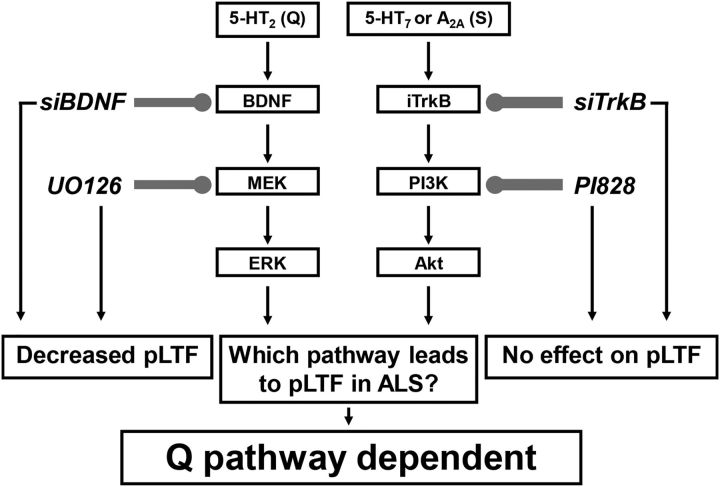Figure 7.
Working model of enhanced phrenic pLTF in end-stage SOD1G93A rats. pLTF is regulated by Gq-protein-coupled (5-HT2) or Gs-protein-coupled (5-HT7 and A2A) metabotropic receptors (activating the Q and S pathways, respectively). We speculate that 5-HT2 receptor activation induces new BDNF synthesis and MEK/ERK activation, whereas 5-HT7 or A2A receptor activation induces new TrkB synthesis and PI3K/Akt activation. Either mechanism acting alone can produce pLTF in normal rats. Both intrathecal siBDNF (targeting BDNF mRNA) and UO126 (MEK/ERK inhibitor) blocked pLTF in wild-type and SOD1G93A rats, confirming that the predominant mechanism of pLTF is the Q pathway. In contrast, intrathecal siTrkB (targeting TrkB mRNA) or PI828 (PI3K/Akt inhibitor) failed to block moderate AIH-induced pLTF in SOD1G93A or wild-type rats, demonstrating that the S pathway does not contribute to pLTF in SOD1G93A or wild-type rats. Thus, enhanced pLTF in SOD1G93A rats arises from increased Q-pathway contributions.

